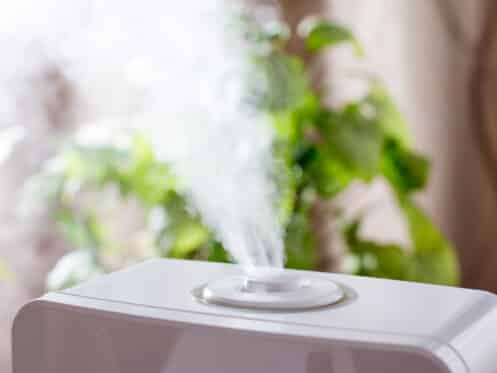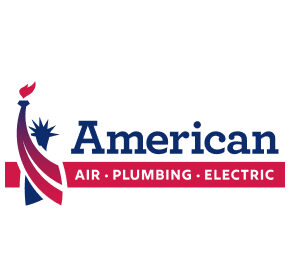The environment inside your home can get very uncomfortable because of excess humidity. The effects can go from discomfort to damage in the house, including mold and mildew growth. You may begin to perceive a musty smell, have allergic reactions, or find condensation accumulating on the windows. When you encounter these problems, you need a reliable solution to balance the air throughout the house.
Understanding Whole-Home Dehumidifiers
Often, most homes rely on air conditioners to remove excess moisture from the air when set at moderate speed. However, an old unit can fail to properly reduce the moisture levels, especially when they suddenly go very high. This calls for the use of a whole-home dehumidifier. These are systems that are installed as an add-on to the HVAC units. It is connected directly to the return duct leading to the air conditioner. The warm indoor air passes through the dehumidifier’s evaporator coils, and the water vapor condenses into a liquid. The water is collected in a pan and funneled away from the system. The dehumidified air is then moved to the air conditioner and recirculated back into the house.
Benefits of Installing a Whole-Home Dehumidifier
For a comfortable and healthy indoor environment, you should have relative humidity that ranges between 40 to 60%. In the summer, the air is naturally humid but can also be high at other times of the year. This can be caused by taking long hot showers, cooking, drying clothes inside the house, and breathing. Unlike a portable dehumidifier, which removes air moisture from a small area, a whole-home dehumidifier works to dehumidify the entire house. Here are some benefits of using them in your home.
1. Indoor Comfort
High humidity levels can make a room feel warmer than it is, making the occupants feel sticky and very uncomfortable. Usually, the body cools itself by releasing moisture, which evaporates, leaving a cold sensation. When the environment is saturated with water vapor, the cooling mechanism is reduced, and you feel hot. In extreme cases, when the room has high humidity and temperature, an occupant can suffer heat stroke.
High humidity can reduce the time you spend sleeping, which can affect your overall health and productivity. Most people adjust the thermostat settings so the air conditioner runs more often, which causes them to spend more energy. Instead, you should invest in a dehumidifier and set the AC at moderate settings, as strong drafts can cause sleep disruptions and increase heart rate.
2. Safeguard Your Health
Your indoor humidity levels directly affect your family’s health. High humidity provides ideal conditions for the growth of microorganisms that can trigger health complications. Air moisture can make it hard to breathe, and people with asthmatic conditions can experience deteriorating conditions. With a dehumidifier, the air becomes lighter and easy to breathe.
A dehumidifier can also eliminate mold growth, which tends to grow when humidity exceeds 60%. Mold releases spores that can trigger allergic reactions, including coughing, runny nose, headaches, and fatigue.
3. Protect Your Property
A whole-home dehumidifier prevents threats that can damage your home. High humidity can warp wooden structures and furniture. Furniture placed close to external walls is at an increased risk of dampness, which can result in rotting. If the problem continues for extended periods, it may cause irreversible damage to wooden structures and fittings, and you may have to make expensive repairs.
Walls have vapor barriers that prevent warm air with moisture from penetrating the surface. However, when the weather is warm, these can fail. Moisture can condense on the construction materials, especially in the foundation, crawl spaces, and basements. The change in moisture content in the plaster, joists, and other materials can cause them to expand and contract constantly, which can cause cracks.
You may also notice the paint on surfaces and wallpapers start to peel or develop stains. This mainly happens on the external walls, as the moist indoor air meets a cold surface and the vapor condenses. Besides flaky paint and curling wallpaper, you may find white or dark green patches due to mildew and mold growth. When not controlled, these microorganisms can digest the material on the surface. It can lead to weakened ceilings and walls and compromise the strength of the building.
4. Improve Air Quality
When your house is too humid, water-soluble odors and pollutants may be in the air. These can affect the quality of indoor air as fungus and bacteria in ductwork that can lead to your home getting weird odors. You can use a dehumidifier alongside an air purifier or scrubber to clean the air of small particles.
5. Improved Cooling Efficiency
Installing a whole-home dehumidifier can save your air conditioner from overworking. Moisture is condensed when an AC passes warm indoor air over the evaporator coils, reducing air moisture. When the humidity is too high and the AC fails to remove it completely, most people force it to run more. With a whole-home dehumidifier, you can regulate the humidity and stop the cooling system from overworking.
Factors to Consider When Purchasing a Whole-Home Dehumidifier
To have the maximum benefits of having a whole-home dehumidifier, you can speak to an HVAC professional who will help you decide the right system for your home. There are several factors to consider before purchasing a dehumidifier, and here are some of them.
1. Size
It is vital to have a dehumidifier with the capacity to meet your home’s demands. Your dehumidification size is based on the cubic footage of the house. Some geographic areas are also prone to high external humidity and may need dehumidifiers with higher capacity. If your home has gaps and air leaks, it may need a larger capacity. This is because humid air from outside the house can infiltrate the house through the leaks.
2. Circulation
It is advisable to have a dedicated return and use the HVAC or dedicated supply. With this, you can exhaust the dehumidifier into the HVAC supply so its blower can distribute the dehumidified air into the house. Otherwise, you can choose a model with circulation mode and set it to circulate the air.
3. Portability
Some whole-home dehumidifiers have casters, so they can be easily moved around the house. However, to allow unrestricted water movement, you must set a drain at every new location lower than the system.
4. Noise and Heat
Whole-home dehumidifiers produce noise and heat. To prevent distraction, it is vital to make proper arrangements for where to install them.
5. Cost
It’s essential to work within your financial abilities when budgeting. The cost of installing a whole-home dehumidifier varies depending on factors, including the home’s size and the installation’s complexity. Even though professional services may be higher, they can properly install the system. You can enjoy long-term savings on energy bills and home maintenance, which may compensate for the initial investment.
Schedule an appointment with our professional at American Air, Plumbing, and Electrical for a whole-home dehumidifier installation. We ensure it is correctly integrated with the existing HVAC system. We specialize in heating and air conditioning services in Oviedo, FL, and Central Florida. Contact us today at American Air, Plumbing, and Electrical for HVAC systems installation, repair, and maintenance services.


